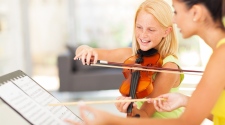What is social and emotional learning? We’re used to schools that focus on the ‘basics’ like math and English, but we also want our children to get into good habits as they grow up so that they can live healthy, happy lives and become productive members of society. Although it has traditionally been left to parents to teach social and emotional skills, we now know that children learn some things much more effectively in the company of their peers. That’s why good schools are now including this as part of the curriculum – but how is it taught and what specific improvements can you expect to see if your child is receiving it?
How can social and emotional learning be taught?
Social and emotional learning is usually taught partially by teachers and partly at a peer-to-peer level, using class debates and small discussion groups. The Stamford American international school in Hong Kong has a great curriculum on this subject; teachers bring topics to the class and then invite students to share their thoughts about them, encouraging them to think critically about what they’ve learned and consider others’ points of view. A focus on becoming more self-aware helps give them the tools to take this forward with self-directed learning outside class.
Encouraging cooperation
By working in groups and discovering that they can make sense of the world more effectively when they listen to others’ suggestions, children learn the value of cooperation. Teachers working with them help outspoken children learn how to listen and help shy children learn how to assert themselves. Challenges and games show them what they can achieve by working together.
Building empathy
Being encouraged to consider other people’s perspectives and learn about other people’s feelings helps children understand that not everybody is the same as them but that it’s worth making an effort to understand them anyway. They are invited to question prejudice and to learn about different cultures. Sometimes lessons include role play to help them imagine being in someone else’s shoes.
Helping with relationships
Improving empathy is just one of a number of ways in which social and emotional learning helps to improve relationship-building skills. Children learn how to deal with disagreement, how to set priorities and negotiate, and how to set safe boundaries for themselves. This can help them in friendships, family relationships, romantic relationships and professional interactions of all kinds.
Improving decision-making skills
Education like this also helps children learn how to balance risk and reward in social contexts, helping them to make better decisions so they’re better prepared for business, politics and day-to-day life. It gives them the confidence to assert themselves but also teaches self-discipline and helps them avoid hasty or impulsive behavior.
Overall, social and emotional learning is about helping children to become fully rounded human beings who are ready to take their places in the adult world. It enables them to start out with skills that can take decades to learn from experience, so they can deal with whatever life throws at them and help to build a happier, kinder, more successful society.















